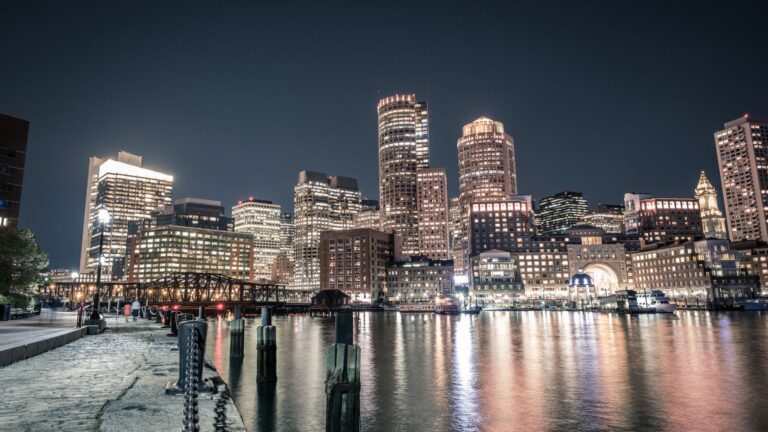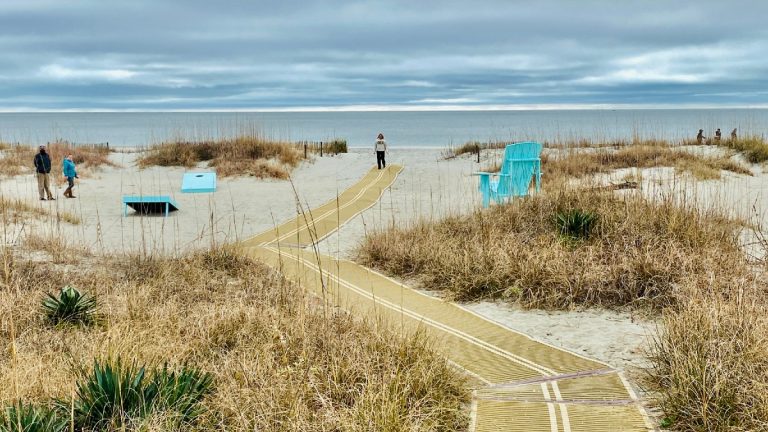Istanbul Travel Guide: Exploring the Crossroads of Cultures and Continents

As participants in Amazon Associates and other programs, we earn from qualifying purchases. This comes at no additional cost to you. For more details, see our Affiliate Disclosure.
Istanbul, where the East meets the West, is a vibrant city that straddles two continents and boasts a rich tapestry of culture and history. As you wander through its bustling streets, you’ll encounter ancient mosques, churches, and bazaars sitting comfortably alongside modern restaurants and galleries. This city, once the capital of both Byzantine and Ottoman empires, offers a fascinating journey through time, where every corner tells a story of convergence and coexistence. Istanbul invites you to immerse yourself in its diverse cultural heritage, from the majestic Hagia Sophia to the aromatic spice markets, ensuring an unforgettable experience at the crossroads of Europe and Asia.
Hagia Sophia: A Monument of Many Faiths
Hagia Sophia has stood as a symbol of the confluence of religions and cultures for centuries. Originally built as a Christian cathedral in 537 AD under the Byzantine Emperor Justinian I, it was converted into a mosque after the Ottoman conquest in 1453. Today, it serves as a museum in Istanbul, showcasing elements of both Christianity and Islam. Its massive dome, considered an engineering marvel of its time, rises majestically above a harmonious blend of Christian mosaics and Islamic calligraphy, making it a profound emblem of the city’s complex history.
The interior of Hagia Sophia is a visual testament to its multifaceted heritage, with stunning mosaics depicting Christian iconography alongside Arabic inscriptions. Visitors are often struck by the serene and awe-inspiring ambiance that the grand space provides. Its ability to embody the spirit of two major world religions under one roof not only makes it unique in the architectural world but also illustrates Istanbul’s historical role as a bridge between East and West.
The Grand Bazaar: Shopping Through History
The Grand Bazaar is one of the largest and oldest covered markets in the world, with roots stretching back to the 15th century. Nestled in the heart of Istanbul, it offers a labyrinth of over 60 streets lined with thousands of shops bursting with an array of goods, from fine jewelry and antiques to spices and textiles. The bazaar is more than just a place for commerce; it’s a bustling microcosm of Istanbul’s daily life and a cultural landmark that has evolved with the city over centuries.
As you wander through the Grand Bazaar’s vast network of alleys, you’ll be enveloped by the rich scents of spices and the vibrant colors of Turkish crafts. The sounds of haggling buyers and the sight of intricately designed wares provide a sensory experience that transports visitors back in time. The bazaar is not only a paradise for shoppers but also a must-visit for anyone wanting to experience the traditional pulse of Istanbul.
The Blue Mosque: Architectural Wonder
The Blue Mosque, also known as Sultan Ahmed Mosque, is renowned for its striking architecture and spiritual significance. Built between 1609 and 1616 during the rule of Ahmed I, its design reflects the zenith of Ottoman mosque architecture and is considered a masterpiece of Islamic art. The mosque gets its nickname from the blue tiles adorning its interior walls, which feature intricate patterns and give the building a luminous, serene ambiance.
The mosque’s exterior is just as impressive, with its harmony of domes and six slender minarets that dominate Istanbul’s skyline. It remains an active place of worship, and its courtyard and prayer hall are open to both pilgrims and tourists, offering a peaceful retreat from the bustling city outside. The Blue Mosque continues to be a symbol of the city’s historical and architectural grandeur, captivating visitors from around the world.
Topkapi Palace: A Glimpse into Ottoman Splendor
Topkapi Palace, once the court of the Ottoman Empire, now serves as a museum that offers a rare glimpse into the opulent lifestyle of the sultans. Built in the mid-15th century by Sultan Mehmed II, the palace complex is a stunning display of Islamic art, with richly decorated courtyards linked by ornate chambers that house an impressive collection of artifacts, including the Prophet Muhammad’s cloak and sword.
The palace is not just significant for its historical and architectural value; it also offers panoramic views of the Bosphorus and the Golden Horn, making it a strategic vantage point for both ancient rulers and modern visitors. Its lush gardens and intricate interiors provide a serene escape from the city’s hustle and invite visitors to wander through the lavish world of Ottoman rulers, reflecting on the empire’s legacy of artistic and cultural richness.
Bosphorus Strait: Scenic Waters Connecting Continents
The Bosphorus Strait is not only a vital international waterway but also one of Istanbul’s most stunning natural features. It forms part of the boundary between Europe and Asia, making Istanbul the world’s only city that spans two continents. The strait has been a key maritime route for trade and military ventures throughout history, influencing Istanbul’s strategic importance and its cultural development.
Cruising the Bosphorus offers a unique way to experience Istanbul from the water, providing a scenic view of the city’s skyline dotted with minarets and modern buildings. Along its shores, opulent palaces, ancient castles, and luxurious mansions reveal the city’s layered history and architectural diversity. A trip along the Bosphorus is essential for any visitor, offering a fresh perspective on this dynamic city where east truly meets west.
Istanbul Modern: The Pulse of Contemporary Art
Istanbul Modern, located in the trendy Karaköy district, represents the city’s vibrant contemporary art scene. Established in 2004, it was Turkey’s first museum of modern and contemporary art, featuring works by Turkish and international artists. The museum plays a crucial role in promoting Istanbul as a cultural hub, not just steeped in history but also actively engaging with modern artistic expressions.
The museum’s collection includes a wide range of media, reflecting the dynamic nature of contemporary art, from painting and sculpture to video and installation. Istanbul Modern also hosts temporary exhibitions, talks, and workshops that foster a dialogue between artists and the public, making it a focal point for cultural exchange and artistic innovation in Istanbul.
The Spice Bazaar: Flavors of the Silk Road
The Spice Bazaar, also known as the Egyptian Bazaar, is one of Istanbul’s most colorful and fragrant landmarks. Located in the Eminönü quarter of the Fatih district, it is the second-largest covered shopping complex after the Grand Bazaar. Since its establishment in the 1660s, it has been the center of spice trade in the city, where merchants from all over the world come to sell exotic herbs, spices, dried fruits, nuts, and delicacies.
The bazaar’s vibrant atmosphere is enriched by the potent aromas of cinnamon, saffron, mint, thyme, and every imaginable herb and spice. Visitors can explore the myriad of stalls offering not only spices but also Turkish delight, teas, and various traditional sweets and culinary products. The Spice Bazaar is a feast for the senses and a testament to Istanbul’s historical role as a melting pot of cultures and flavors.
Galata Tower: Panoramic Views of Istanbul
Galata Tower, one of Istanbul’s most striking landmarks, offers some of the best panoramic views of the city. Built in the 14th century as part of the defenses of the Genoese colony in Constantinople, the tower has served various roles over the centuries, from fire lookout to prison. Today, it stands as a premier visitor attraction, where people can gaze out over the confluence of the Bosphorus, the Golden Horn, and the Istanbul skyline.
The tower’s upper balcony circumnavigates the structure, providing a 360-degree view that encompasses both the historical and modern aspects of Istanbul. It’s particularly enchanting at sunset when the city lights begin to sparkle. Inside, the tower also houses a restaurant and café, offering visitors a chance to enjoy traditional Turkish cuisine while overlooking the vast urban landscape below.
Suleymaniye Mosque: A Masterpiece of Islamic Architecture
Suleymaniye Mosque, designed by the famed Ottoman architect Mimar Sinan for Sultan Suleiman the Magnificent, is among the most magnificent mosques in Istanbul. Completed in 1557, this grand mosque complex includes a mosque, a hospital, a kitchen, a school, and the tombs of Sultan Suleiman and his wife Hurrem Sultan (Roxelana). Its harmonious design and proportions showcase the zenith of Ottoman architectural achievement and Islamic art.
The mosque’s interior is as impressive as its exterior, with high domes and semi-domes, fine İznik tiles decorating its walls, and large windows that allow light to beautifully illuminate the vast prayer hall. The Suleymaniye Mosque is not only a place of worship but also a symbol of the cultural and artistic prowess of the Ottoman Empire at its peak. Visitors are welcomed to experience the spiritual and architectural beauty of this historic mosque, which continues to dominate Istanbul’s skyline.
Turkish Cuisine: A Blend of Traditional Flavors
Turkish cuisine in Istanbul offers a delightful culinary adventure, characterized by its rich flavors and diverse influences from across the centuries. From street food like simit (Turkish bagel) and döner, to more elaborate dishes such as meze (appetizers) and kebabs, the city’s food scene provides a broad taste of Turkish culinary traditions. Seafood is particularly prominent, given Istanbul’s location by the sea, with fish restaurants along the Bosphorus serving fresh catches daily.
Desserts are an integral part of Turkish cuisine, with baklava leading the charge. This sweet, made from layers of filo pastry, filled with nuts and sweetened with syrup or honey, is a must-try in Istanbul. Turkish coffee, served thick and strong, is the perfect end to any meal, reflecting the country’s long-standing coffee culture. Whether dining in a fancy restaurant or grabbing a bite from a bustling street vendor, the flavors of Istanbul are sure to leave a lasting impression.






